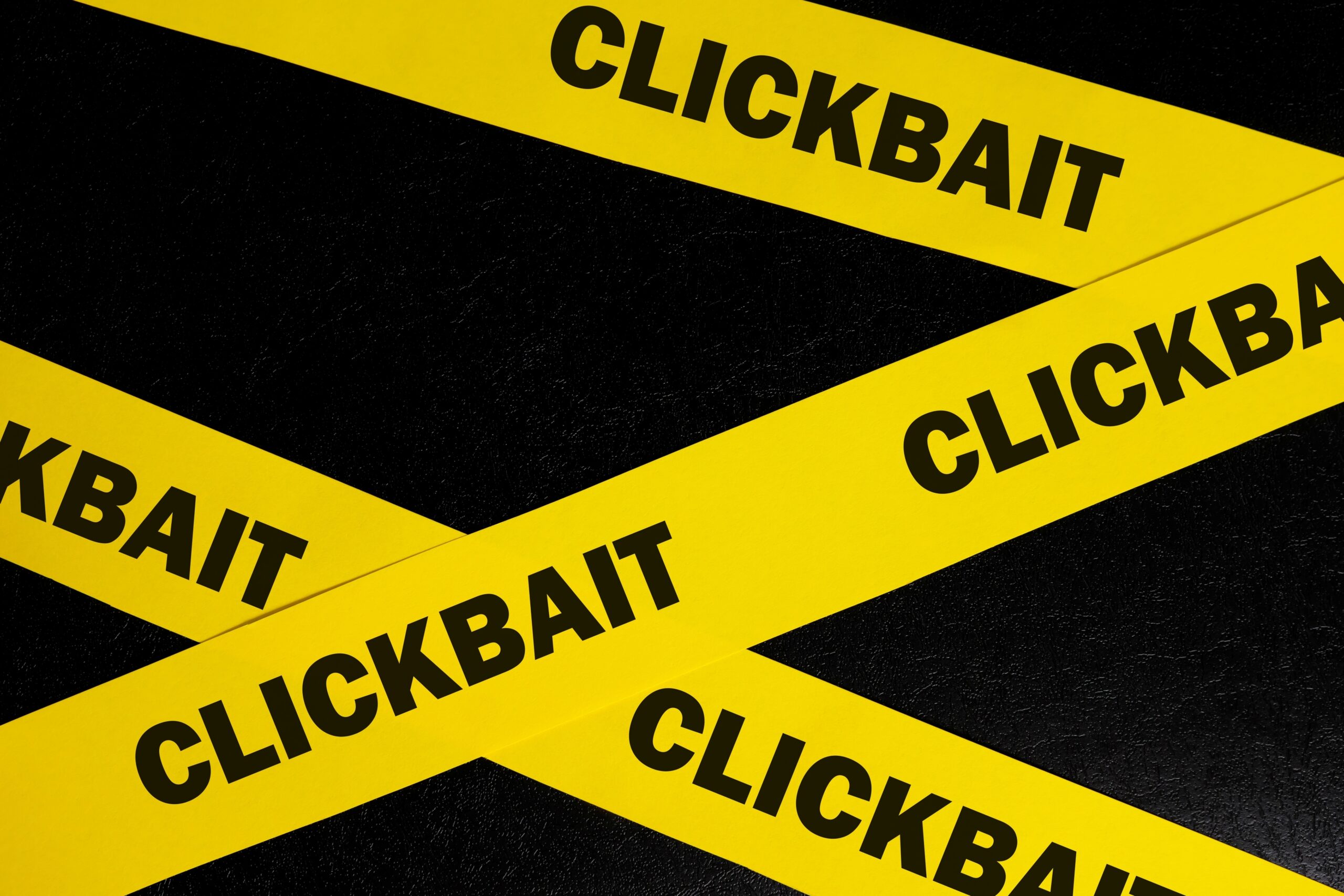All posts by NFI Media
The Environmental Working Group
The Environmental Working Group (EWG), a Washington-based environmental lobbying organization, claims its mission is “to see that Americans get straight facts, unfiltered and unspun.” But EWG does the polar opposite, cooking up junk “scientific” reports and feeding them to the media. The result: some of the nation’s worst phony health scares in the past 10 years.
Here’s just a handful:
- In 2004, EWG created and publicized a report that fueled new fears about a link between autism and the mercury found in childhood vaccines. Some parents responded by refusing or delaying vaccinations for their children, putting their sons and daughters at risk of serious disease. The vaccine scare has since been widely discredited, but the original report and news release remain on EWG’s website, and some parents still are declining vaccinations for their children.
- Each year, EWG releases its list of the “Dirty Dozen” – the 12 fruits and vegetables activists deem the “most contaminated” by pesticide residue. A study published in the Journal of Toxicology found the list is scientific nonsense. Even worse, it discourages people from eating healthy fruits and vegetables. After hearing EWG statements about the “Dirty Dozen,” almost 10 percent of low-income Americans stated they would cut back on fruits and vegetables – a decidedly bad decision for their health. As Samuel Cohen, a pathologist from the University of Nebraska Medical Center, noted: “A focus on nutrition in general would be much more beneficial to human health than this misguided focus on extraordinarily small contamination levels of pesticides.”
Then there are EWG’s ongoing attacks on the safety of seafood. EWG has publicized bogus reports warning about mercury in seafood and recommended that Americans eat only one serving of canned light tuna per month because it “may contain industrial pollutants,” and lobbied the government for new restrictions on seafood.
EWG even claims “officials of the FDA are secretly mounting an eleventh-hour drive to eliminate the 2004 warnings on mercury in fish, a move that would benefit the commercial fishing industry.” What EWG doesn’t mention is that the National Fisheries Institute has repeatedly called on the federal government to update its seafood advisory with a full and public review of the science.
Why? Because we know that decades of research show seafood is one of the healthiest foods on earth – safe to eat and rich in essential nutrients like protein, vitamin D, and Omega-3 fatty acids.
The guidelines set by the Food and Drug Administration (FDA) regarding fish consumption and mercury are the most stringent in the world – and contain a ten-fold safety factor. That means a person would have to eat 10 times more fish than the current safety threshold every day for the rest of their life to reach a level associated with any known risk.
In fact, there has never been a case of mercury toxicity in the U.S. attributed to the normal consumption of commercial seafood documented in any peer-reviewed medical journal. Experts agree that the real health concern regarding fish is that Americans aren’t eating enough of it.
But EWG will never say any of that. It’s no wonder that 79 percent of toxicologists surveyed say that EWG is guilty of overhype and exaggeration.
Scientists don’t trust EWG. Neither should the public.
Latest News
Got Mercury
Got Mercury is a campaign launched by the Turtle Island Restoration Network, an activist organization that goes heavy on the rhetoric while skimping on the science. The campaign’s website explains: “Because of the ubiquitous [sic] nature of mercury in our environment and because federal and state public health agencies are not doing enough to raise public awareness and protect the public from mercury, we developed gotmercury.org.”
Got Mercury has launched an array of desperate stunts in an attempt to frighten people into cutting back on seafood. During one holiday season, Got Mercury called on charities not to distribute donations of canned tuna to poor people over groundless mercury fears. They’ve also publicized a bogus report warning about mercury in tuna sandwiches served in school lunches.
Governmental agencies have also grown wise to Got Mercury’s ways. In a demonstration of just how little credibility GotMercury.org has, the FDA rejected every point the activists raised in their petition to pass “more stringent” regulations on mercury in seafood. As the FDA noted in its official response:
- “You present no evidence that mercury levels in ocean fish are rising or will rise as a consequence of increasing mercury in the ocean…”
- “Your petition failed to provide sufficient data or information, such as specifics relating to actual injuries within the general population or estimates of risk…”
- “The petition does not identify any ‘case studies’ of possible individual injuries from prenatal exposure to methylmercury in the U.S., nor are we aware of any…”
- “In your petition, you devote considerable attention to canned tuna…The FAO/WHO assessment estimates that these products are beneficial — and thus pose no reasonable possibility of injury…”
It’s clear that environmental activists are not health experts. And when reporters quote activists on health concerns, they’re frequently wrong — especially on seafood.
For example, Got Mercury grossly exaggerates the hypothetical risk of mercury present in commercial seafood. These trace amounts of mercury occur naturally – the byproduct of thermal vents and volcanoes on the ocean floor — and have been present in seafood for millions of years. In fact, the infinitesimal amount of mercury in seafood is the same as it was 90 years ago, according to the FDA.
The fish Americans order at their favorite restaurant or buy from their local grocer is safe to eat. Ten species of fish account for close to 90 percent of the seafood we eat in the United States, and all have low levels of mercury.
For years, medical organizations, government agencies, and independent experts have stressed that eating a variety of fish at least two to three times per week is essential for optimal brain, heart and eye health in children and adults alike. Doctors, nutritionists, and credentialed researchers — who use peer-reviewed science to shape their recommendations — all agree that the real risk when it comes to seafood is not eating enough of it.
The activists ask: Got Mercury? Here’s a better question: Got Facts?
Latest News
The Sierra Club
The Sierra Club, one of the nation’s oldest environmental groups, claims its mission is to “educate… humanity” about “the natural and human environment.” But the organization has strayed far from its original purpose, resorting to desperate tactics to gain headlines for their phony causes. Recently they even broke one of their core tenants of working within the law when their activists unlawfully chained themselves to the White House fence, echoing the tactics of other, even more extreme groups. Its activists are now so intent on drumming up headlines that they’ll say and do anything to get attention, including manufacturing phony fears about seafood.
The Sierra Club’s “Beyond Coal” campaign continues to spew misinformation about canned tuna, claiming pollution from coal-fired plants is contaminating seafood. A Sierra Club official claims “Mercury pollution from coal-fired plants affects us every day, from the can of tuna fish we eat to the air we breathe.” The campaign asks: “Is there coal in your tuna? purposefully conflating environmental pollution with naturally occurring mercury found in all commercial fish.” We’ve directly called on the Sierra Club to stop peddling these distortions, but its shameful, manipulative campaign continues.
The truth of the matter is there has never been a single case of mercury toxicity from commercial seafood documented in a peer-reviewed study. Coal-powered utilities contribute to pollution in inland waterways and freshwater fish, but tuna are saltwater fish that live in the world’s oceans.
There are many layers of regulations already in place to protect American consumers. The U.S. Food and Drug Administration enforces an actionable limit of 1.0 parts per million of mercury in seafood, which itself has a built in safety margin of 1,000 percent—meaning that a person would have to consume 1,000 percent of the recommended limit to be in danger. A 130-pound woman of childbearing age could theoretically eat 24 cans of light tuna every week without exceeding these strict guidelines.
In fact, health and nutrition authorities — including the World Health Organization, the Institute of Medicine, National Institutes of Health, and Harvard School of Medicine — all agree that the major risk associated with eating seafood is not eating enough. A recent study, for example, showed children whose mothers eat no fish during pregnancy are more likely to have abnormally low IQs. Another study found that more than 80,000 people die prematurely each year because they don’t get enough of the omega-3 fatty acids found in fish. As one Harvard researcher concluded: “Seafood is likely the single most important food one can consume for good health.”
Sierra Club activists have spinned their tall tuna tales to the point they’ve managed to confuse even themselves. In their Mercury Survival Guide, they actually recommend eating canned tuna, directly countering their own advice to avoid the fish.
It’s time that the Sierra Club stopped polluting the public discourse with phony scares. It can start by communicating the facts about seafood — and truly “educating humanity about the natural and human environment.” As we’ve noted before, there are far better ways to lobby for a cause than jeopardizing the health of millions of Americans.
Latest News
Natural Resources Defense Council (NRDC)
The Natural Resources Defense Council (NRDC), a political and litigation behemoth, uses scare PR campaigns and pseudoscience to influence government regulations.
Although the NRDC claims to “connect environmental issues with the basic concerns of American families,” its scheming only restricts consumer freedom and frightens people away from safe foods like fish.
For instance, the NRDC wrongly warns, “the most common source of mercury exposure for Americans is tuna fish.” An NRDC “expert” thinks, “We need a strong global treaty … protect the safety of the fish (and other aquatic food sources) we eat.” Of course, the methylmercury found in all ocean species of fish is naturally occurring — caused by underwater volcanic activity that has been going on for millennia. Its “Mercury Calculator,” which attempts to substitute legitimate health advice for an easy but arbitrary 1-2-3 online checklist and analysis, contains an important caveat: “Remember that this calculation is only an estimate and should not be considered definitive.”
In other words, you can’t trust the NRDC. Not only does it promote faulty advice, it assumes a position of authority on health issues when it has no credibility to do so.
Equipped with activist trial attorneys, former government officials, political strategists, policy wonks and a sister 501(c)(4) advocacy group, the NRDC is an partial significant actor with a lot of money and power on the line. Ironically enough, the NRDC thinks it is still qualified to “defend…scientific integrity” and “scrutinize the qualifications of scientists…to assure they are free from financial conflicts of interest and to uncover biases.”
Not a chance. For decades, the NRDC has intentionally misrepresented scientific findings — or created its own data — resulting in national phony health scares and countless unintended consequences. Of course, a ratings-hungry press all too conveniently perpetuates their sham campaigns.
For instance, the NRDC helped to cause nation-wide pandemonium when it issued a report deeming Alar in apples unsafe. But as Dr. Joseph D. Rosen, professor of food science at Rutgers University, noted, “there was never any legitimate scientific study to justify the Alar scare.” As a result, “sales and prices of all apples declined sharply, and 20,000 apple growers in the U.S. suffered substantial financial harm — even the large number who never used Alar. Farmers went bankrupt.”
As observed in a Hudson Institute report, “Since there isn’t a judge standing at the line of ethics to slap wrists when it is crossed, the public can only hope that individuals will operate with the public’s best interests in mind. The Alar case is not very encouraging.”
Over 20 years later, doubts still linger over the NRDC’s credibility. And for good reason.
Latest News
Oceana
Oceana calls itself “the largest international organization focused solely on ocean conservation.” What it clearly is not: a consumer health group. Otherwise, it wouldn’t be steering people away from fish through alarmism and deception.
Oceana’s “warning signs” have no basis in sound science — only in unfounded fear.
It claims that mercury “find[s] its way into the oceans and the seafood we eat.” But the trace amounts of mercury found in commercial ocean fish are naturally occurring — the result of underwater volcanoes and thermal vents — not the manmade pollution or emissions from coal-fired power plants.
Oceana also falsely declares that there is “mercury contamination in popular fish” and that “tuna is the primary source of mercury in the American diet.” Never mind that all 10 of the most popular fish consumed in America – including canned tuna, salmon, shrimp, crab, and clams — are all low in mercury and far well below the FDA’s very conservative mercury limits. And, levels of mercury in commercial seafood are just as they were nearly 100 years ago.
To amplify its unnecessary warnings, Oceana has “call[ed] on grocery stores to protect their customers by posting warning signs about levels of mercury in seafood.” But scaring consumers will easily dissuade them from eating even the minimum recommended amount of seafood. As the Institute of Medicine cautions, “consumer messages should be tested to see if there are spillover effects for those not targeted by the messages. Evidence suggests that risk-avoidance advice for susceptible groups may be unnecessarily followed by other individuals, or the general public.”
Oceana also dutifully spreads the myth that mercury poisoning in the U.S. is a real phenomenon. The organization’s website cites bunk testimonials that cannot be corroborated by legitimate evidence. After all, no peer-reviewed medical journal has ever recorded a single case of mercury poisoning from the normal consumption of seafood in this country.
So why does Oceana go after seafood?
Andrew Sharpless, Oceana’s chief executive, explained his organization’s approach to Fortune magazine: “People start to care much more and understand the threat to the ocean, when you tell them their tuna fish is contaminated. It’s a dramatic, eye-opening moment for people.”
And it’s profoundly misleading. By just about any measure, fish is one of the healthiest foods on earth.
What deserves a warning sign to the public? Oceana’s fearmongering.
Latest News
Mercury Policy Project (MPP)
The Mercury Policy Project’s (MPP) campaign “to eliminate mercury use and reduce mercury exposure” is based on fear, deceit and science denialism.
For publicity and political impact, MPP activists have perpetuated false dramatic narratives, contradicted scientific consensus and published fraudulent data. They’ve warned that commonplace items like dental fillings, cosmetics and light bulbs are hazardous. They’ve aligned with anti-vaccine zealots to lobby for the removal of thimerosal from vaccines, even though definitive peer-reviewed studies quelled all concerns long ago.
And they have further harmed the public health by frequently stirring up unfounded fear about seafood, even though such risk-centric “ messaging reduces fish consumption…resulting in an overall reduction in the potential health benefits derived from” omega-3 fatty acids.
Instead of relying on expert doctors, nutritionists and scientists, the MPP spreads its own fraudulent, unchallenged “findings” as facts — but they’re clearly not.
The MPP has rejected nutrition guidelines urging greater fish consumption from government bodies like the World Health Organization (WHO), Food and Agriculture Organization (FAO), Food and Drug Administration (FDA) and United States Department of Agriculture (USDA). It has also disparaged peer-reviewed scientific findings from authoritative institutions such as theHarvard School of Public Health and the Institute of Medicine proving that the benefits of eating seafood far outweigh the risks.
Just consider the MPP’s self-published “report” that warns about mercury levels found in tuna served in school lunches. It ignores research showing children arenot eating nearly enough seafood for optimal health. It also fails to note that mercury levels in canned tuna are well below the FDA’s mercury standard (1.0 parts per million, which includes a built-in safety factor of 1000 percent) — meaning that parents have nothing to fear from tuna fish sandwiches.
Just as egregious, the report’s information is anecdotal. Ned Groth, the lead author, relied on what he heard was served at the school of “a friend’s grandson in New Jersey.” No wonder why the report is not found in a peer-reviewed journal — it’s unserious, irresponsible and deeply flawed.
It’s worth noting that activist Ned Groth once wrote to NFI in the hope that it would hire Groth Consulting Services. His rationale: “Americans (essentially everyone) should be eating more fish than they do” and that “consumers need accurate, balanced information to guide their seafood choices.”
NFI didn’t respond to his overtures, so instead Groth began working with the Mercury Policy Project. Since then, he has written an essay called “Tuna Rots Your Brain” claiming that “fish-eating has a ‘dark side’”. He also delivered a lecture to college students where he said his new favorite slogan was, “It’s the tuna stupid!”
Not exactly sound science.
It’s not surprising, then, that MPP co-founder Michael Bender admitted during testimony at an FDA hearing, “… I don’t have a science background.”
That’s why it’s best to ignore MPP’s anti-science ramblings and listen to credentialed scientists and doctors. As the Academy of Nutrition and Dietetics notes , “not all nutrition advice is created equal.”
Causing Harm Since: 2010
Latest News
Environmental Defense Fund (EDF)
Environmental Defense Fund (EDF) activists describe themselves as “pragmatic environmental advocates” who are “grounded in science.” But EDF lobbyists, “experts,” attorneys, celebrity talking heads, and fundraisers are not reasoned and objective champions of the public’s well being.
Their lack of scientific integrity is evident in their campaign to curb mercury emissions from coal-fired power plants. To gain political and public support, they opportunistically misrepresent the safety of seafood through emotional rhetoric and falsehoods.
Hyping risk is one of the key ways the EDF misleads the public. For example, its seafood calculator “does not try to balance risks and benefits” of seafood, a serious omission that Timothy Fitzgerald admitted to the Washington Post. The guide also wrongly advises how much and what kinds of fish various populations should eat because it fails to use the Food and Drug Administration’s (FDA) standard for mercury limits. (It’s worth noting that the FDA standard includes a built-in safety factor of 1,000 percent. That means you’d have to eat 10 times more fish than the FDA threshold every day for the rest of your life to reach a level associated with any known risk.)
The EDF-backed coalition group, Moms Clean Air Force (MCAF), also stirs up unfounded fears. MCAF leadership has instructed women to refrain from eating tuna during pregnancy and avoid feeding it to their children — dangerous advice debunked by decades of research. They have warned about the possibility of mercury poisoning — even though there has never been a documented case in the U.S. from the normal consumption of seafood. And they’ve pretended that choosing a variety of seafood is complicated — it’s not. That’s because the 10 most popular fish enjoyed by Americans (salmon, canned tuna, shrimp, clams, crab) are all low in mercury.
Such deception ignores international scientific consensus: A fish-rich diet is both safe and healthy. The 2010 Dietary Guidelines for Americans recommend Americans eat more fish because “consistent evidence shows that the health benefits from consuming a variety of seafood in the amounts recommended outweigh the health risks associated with methyl mercury.”
The EDF is hardly “grounded in science.” Warning families to avoid seafood is not only wrong – it’s dangerous.
Latest News
Selenium: A Mercury Magnet
Seafood is a source of an antioxidant called selenium. Emerging research shows selenium binds to mercury, neutralizing its effects. Experts at the 2010 Hawaii Seafood Symposium concluded that selenium may explain why there has never been a case of mercury poisoning from eating commercial fish with naturally-occurring traces of mercury. Harmful effects of mercury can only occur when mercury levels are higher than selenium levels. Commercial fish – the kind found in grocery stores and restaurants that come from the ocean and aquaculture – generally contain far more selenium than mercury and research by Dr. Nicholas Ralston of the University of North Dakota has found that tuna in particular tests very high high in levels of selenium and therefore health benefits.
Selenium and Buffering the Effects of Methylmercury
Latest News
An Open Letter to Critics Jeopardizing the Health of Millions of Americans
Over the past decade, environmental activists desperate for publicity and donations have purposefully misinformed the public about seafood nutrition. These activists have propagated what turned out to be genuinely dangerous advice about restricting fish. Their warnings are largely groundless and conflict with recommendations issued by the world’s leading health and nutrition authorities. Yet gullible reporters, acting like stenographers, have dutifully parroted the activists’ warnings in one story after another without researching what the real science says. The result: Americans are eating far less seafood than health experts advise — resulting in tens of thousands of preventable deaths each year.
This letter serves to put environmental and eco-activists on notice: Stop scaring Americans to death. We are holding you accountable for the harm you are causing. Your fear mongering has plenty of negative consequences, including serious public health impacts. Here are just a few of the staggering facts:
· Low seafood consumption is the second biggest dietary contributor to preventable deaths in the United States according to a Harvard study, taking 84,000 lives each year — a toll greater than diabetes.
- The American diet contains the second-lowest percentage of fish in the world — 15 pounds, less than one seafood meal a week.
- Pregnant and nursing women in particular need the omega-3 fatty acids DHA and EPA found in fish. According to research from the Nutritional Neuroscience division at the National Institutes of Health, children whose mothers eat no fish during pregnancy are 29 percent more likely to have abnormally low IQs.
So why would anyone discourage Americans from eating seafood when they already eat far less than half the recommended amount?
- Environmental activist organizations have found the easiest way to get attention from the media and policymakers for their air and water quality demands is to conflate and distort coal-fired power plants pollution with trace amounts of naturally occurring methylmercury found in all commercial seafood. This scare tactic not only distorts the healthfulness of seafood but raises questions about the activists reliablity as a source for any information especially nutrition.
- Lifestyle activists who crave recognition from their peer groups profess to protect the masses from mercury poisoning. But no peer-reviewed medical journal has ever reported a case of mercury toxicity (let alone “poisoning”) in the U.S. attributed to the normal consumption of commercial seafood. (Link here and here to see that all of the 10 most popular fish consumed in America — including albacore canned tuna — are “low mercury” fish.)
- Ocean conservationists believe they can protect species like turtles and sharks by convincing consumers to stop eating and buying canned tuna out of “health concerns”. They think that eliminating demand would diminish the need to fish at all — thus “saving” sea creatures.
All of these activists have an agenda, but none of them are really about public health.
We can no longer stand by while environmental activists purposefully disregard scientific fact — no matter the agenda — or allow reporters to unquestionably repeat activists’ false rhetoric. We cannot and will not allow this threat to the public health to go unchallenged.
We will expose activists for any careless or willful distortion about seafood, including any recommendation that Americans eat less fish. And we will hold reporters accountable any time they parrot misinformation from activists, or fail to uphold the basic journalism standards of accuracy, objectivity and balance.
Americans deserve to know the truth about seafood. It could save their lives.
Latest News
Dr. Mehmet Oz
Causing Harm Since: 2010.
Dr. Mehmet Oz may be a two-time Emmy award winner, media mogul, and Oprah protégé, but he’s first and foremost a dangerous peddler of junk science and medical voodoo.
On “The Dr. Oz Show,” he has proven how much more committed he is to magnetizing viewers and winning ratings wars than promoting sound and scandal-free medical advice. No wonder why doctors, health care professionals, nutritionists, and scientists who actually enforce the most stringent medical standards and ensure the safety of their patients consider Dr. Oz “done, as far as science-based medicine goes.”
Dr. Oz “has cynically leveraged his celebrity status into becoming an irresponsible spokesman against products Americans use daily, whose safety is beyond question” — like fish. He has preached about the dangers of consuming “too much,” exaggerated the risks of methylmercury, and warned everyone — not just pregnant and breastfeeding women and children — to cautiously eat certain species. He has conflated mercury emissions from coal-fired power plants with the naturally occurring, trace amounts of methylmercury present for millennia in all ocean fish and welcomed environmental activists like Jane Hightower to spread mercury poisoning propaganda. Dr. Oz has even tested canned tuna, claiming his approach is better than the FDA’s, yet he refuses to share his methodology and acknowledge the FDA’s mercury limits build in a 1000 percent safety factor.
When he gives credence to eco-activists and their unsubstantiated talking points, Dr. Ozcontradicts recommendations from theDietary Guidelines for Americans, Food and Agriculture Organization/World Health Organization, and American Heart Association and neglects peer-reviewed research from theHarvard Schools of Medicine andPublic Health,Institute of Medicine,University of North Dakota’s Energy & Environmental Research Center,University of Rochester and the National Institutes of Health. All of their findings urge Americans to eat more fish and that the health benefits far outweigh hypothetical risks from methylmercury, yet Dr. Oz — even when we pointed out his errors to him — seems satisfied with his research team’s subpar digging.
Dr. Oz has repeatedly invited “the controversial alternative medicine guru” Dr. Joseph Mercola, to convince viewers that doctors cannot be trusted, eggplant cream and baking soda cure cancer, walking barefoot outside will relieve bodily exhaustion and dental fillings are toxic. AsCBS put it, “Dr. Oz [was] slammed over apple juice arsenic warning”, including two public censures from the FDA. Instead of abhorring diet supplements, Dr. Oz prefers giving a “theatrical endorsement of dubious weight loss products”, such as green bean coffee extract and raspberry ketones. Not to mention that one of his episodes asked, “Are Psychics the New Therapists?” and was cited as just one of the many reasons why he won the James Randi Educational Foundation’s Media Pigasus award for being one of “the 5 worst promoters of nonsense.”
ProEthics blog, Ethics Alarms, holds that “Whatever the reason for Oz’s complete abdication of due diligence and responsibility, he has betrayed the trust of the public that looks to him as an expert.” We certainly agree. He must stop giving anxiety-inducing, inaccurate advice before too many people fall for it — putting their and their families’ health at risk.
Instances of Harm:











